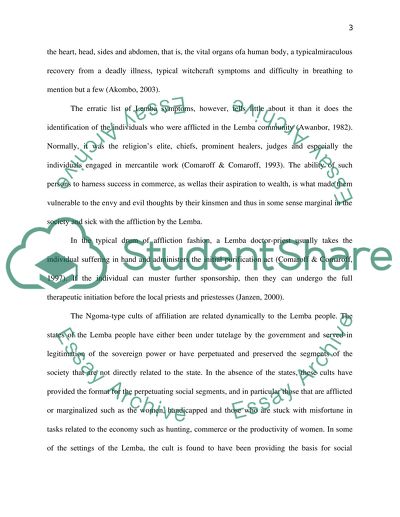Cite this document
(“Religion in Africa- Explore how the Lemba cult of the Congo conforms Essay”, n.d.)
Religion in Africa- Explore how the Lemba cult of the Congo conforms Essay. Retrieved from https://studentshare.org/religion-and-theology/1684813-religion-in-africa-explore-how-the-lemba-cult-of-the-congo-conforms-to-the-understanding-of-an-ngoma-type-cult-of-affliction
Religion in Africa- Explore how the Lemba cult of the Congo conforms Essay. Retrieved from https://studentshare.org/religion-and-theology/1684813-religion-in-africa-explore-how-the-lemba-cult-of-the-congo-conforms-to-the-understanding-of-an-ngoma-type-cult-of-affliction
(Religion in Africa- Explore How the Lemba Cult of the Congo Conforms Essay)
Religion in Africa- Explore How the Lemba Cult of the Congo Conforms Essay. https://studentshare.org/religion-and-theology/1684813-religion-in-africa-explore-how-the-lemba-cult-of-the-congo-conforms-to-the-understanding-of-an-ngoma-type-cult-of-affliction.
Religion in Africa- Explore How the Lemba Cult of the Congo Conforms Essay. https://studentshare.org/religion-and-theology/1684813-religion-in-africa-explore-how-the-lemba-cult-of-the-congo-conforms-to-the-understanding-of-an-ngoma-type-cult-of-affliction.
“Religion in Africa- Explore How the Lemba Cult of the Congo Conforms Essay”, n.d. https://studentshare.org/religion-and-theology/1684813-religion-in-africa-explore-how-the-lemba-cult-of-the-congo-conforms-to-the-understanding-of-an-ngoma-type-cult-of-affliction.


